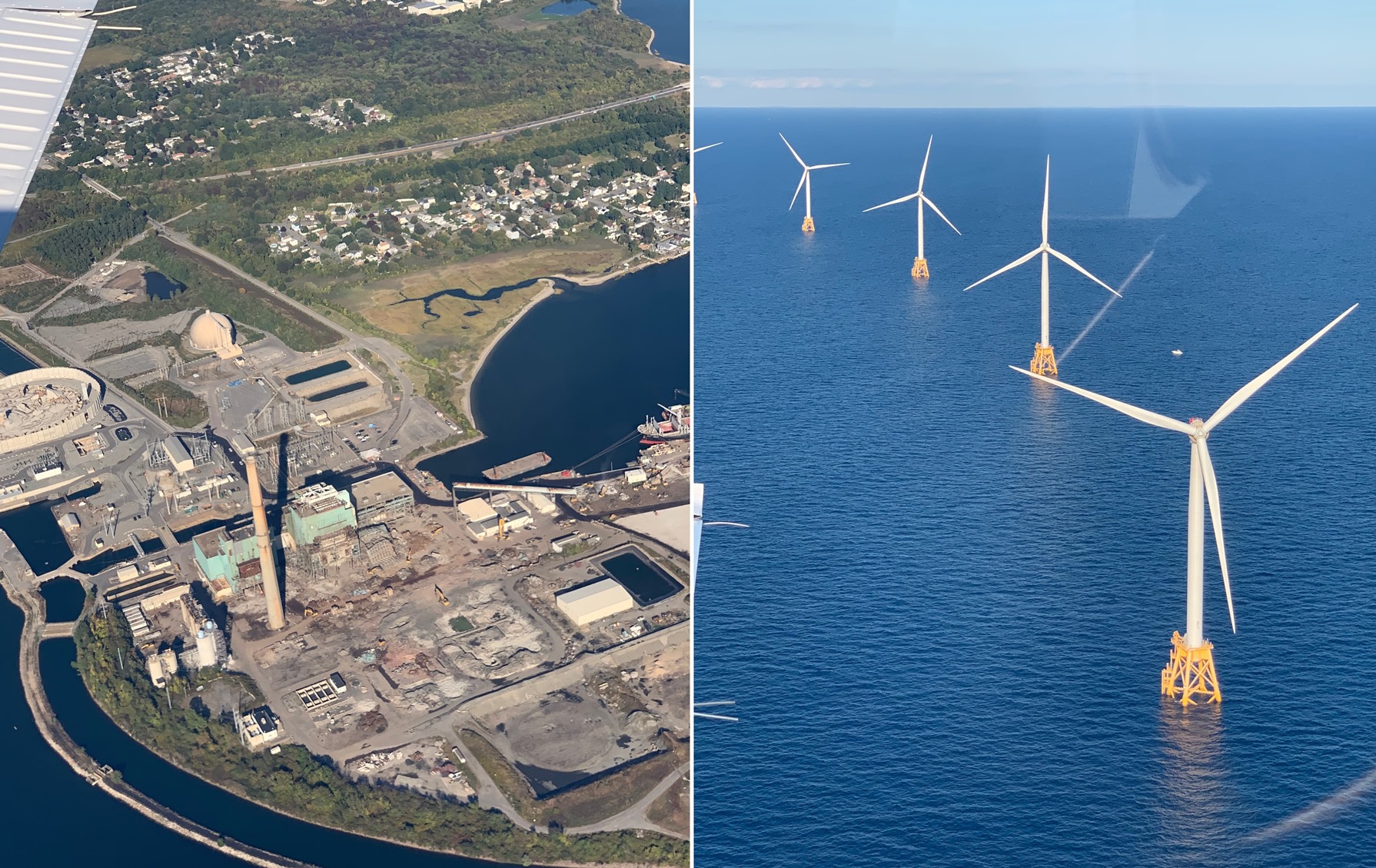From coal plants to offshore wind in the US - I recently saw that seismic shift underway with my own eyes, and it took my breath away. For every person out there who is in distress about the climate crisis, I wish I could have taken you in that airplane with me. So I will try here to do the next best thing.
On Wednesday I joined some Sierra Club leaders as we took off from Boston’s Logan airport and flew south to fly over the site of the now-demolished Brayton Point coal plant -- once the largest coal plant in the Northeast -- and over the first US offshore wind farm that powers Block Island, RI. Almost every coal plant in New England is now slated for retirement - Brayton Point was coal plant #150 announced to retire nationwide and was demolished this summer. The current tally stands at 297.
As coal disappears in the rear view mirror, an entire new industry is being born to replace it off the Atlantic Coast. The Block Island project was the nation’s first, developed to provide affordable power for an island once entirely reliant on polluting, noisy, expensive diesel generators.
In the wake of the Block Island project, seven states have commitments to procure 20,000 megawatts of offshore wind by 2030 - more than 650 times more than the 30 MW Block Island project. Those turbines will generate enough power to meet two-thirds of the electricity demand in New England. And they will be a $70 billion investment that will generate enormous new economic opportunities across the Eastern US.
Flying over the coal plant site and seeing where its cooling towers once stood, I was struck by the permanence of that coal plant retirement, and the 296 others announced for closure to date. That’s one massive source of climate-disrupting carbon pollution that’s gone for good. No bailouts, rollbacks, or elections will resurrect those smokestacks, and now that renewable energy is cheaper than the power from existing coal plants across this country, there isn’t even a long-term change of fortune in sight for the rest of the nation’s coal plants.
Instead, the Brayton Point coal plant site is now poised to be a launching point for the burgeoning new offshore wind industry, sending crews and materials out to build turbines 12 - 30 miles off the Atlantic Coast, and creating thousands of new, family supporting jobs in the process.
Years of grassroots advocacy by the Sierra Club and many partners made all this possible, from holding coal operators accountable to building alliances to advance offshore wind. I know the climate crisis feels overwhelming, but we know where these decisions are being made about our energy future - most of them in states and cities, not in Washington - and we are figuring out how to win.
However, as this exciting new industry is born, Washington is in a position to either lend a hand or throw roadblocks in its way - and the Trump administration is doing the latter. They appear to be slow-walking the environmental review of the projects, which require federal permits, by announcing a sweeping new review of all offshore wind just this summer. And the longer they wait, the closer they push these companies to missing claiming existing federal wind energy tax incentives. Under existing rules, projects must commence construction before the end of 2019 to be eligible for the investment or production tax credits, and with that window fast closing, many offshore wind projects in the pipeline may miss out on critical federal support.
You can help - legislation has been introduced in Congress to support the growth of offshore wind power by extending existing tax incentives for the renewable energy industry. Before Congress adjourns for the year, we need our representatives to act. Please send your member of Congress a message today urging them to advance clean energy tax legislation this year.
I believe we can make the big transformations needed to defend our climate in the short amount of time we have to make them, if we all do our best work together. We can meet this moment and what it’s calling for from all of us. Let’s go.
